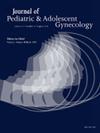50. 我们给病人写信做得怎么样?从三级儿科和青少年妇科中心的临床通信的回顾
IF 1.7
4区 医学
Q3 OBSTETRICS & GYNECOLOGY
引用次数: 0
摘要
人们认识到,当信件直接寄给他们时,患者对医疗保健的参与度会提高。青少年和青壮年有不同的沟通需求;用通俗易懂的语言进行临床交流被认为可以改善病人的预后。自2018年以来,英国的临床医生被建议直接向患者发送所有诊所信件——这次审计旨在确定是否遵守了这一国家指南。方法回顾性分析某三级儿科和青少年妇科门诊于2024年1月写给患者的门诊信函。记录了临床关注、患者年龄、学习需要和收信人。对于写给患者的信件,有一个主观的可读性评价,评估是否存在未解释的医学术语,并计算Flesch Reading Ease分数。结果共回顾125例门诊会诊。患者中位年龄为17岁(2-51岁)。临床情况各不相同,包括53/125的月经功能障碍,27/125的苗勒管异常,20/125的性发育状况差异和10/125的外阴问题。大多数信件直接寄给患者(100/125 80%)。其余(25/125 20%)寄给转诊医生。在9/25,考虑到孩子的年龄或有学习需求的年轻人,这是合适的。在10/25中,会诊记录作为临床通信发出,5次会诊没有门诊预约信,1次直接写信给家庭医生,要求转介到对患者更当地的服务。大多数写给患者的信件被主观地分析为具有接收者合适的语言(92%)。信件中未解释的术语包括:禁忌症、多毛症、恶性和腹腔镜检查。Flesch Reading Ease的平均得分为51.5,相当于相当难读。结论总体而言,临床函件符合国家指导方针,面向患者。虽然大部分写给病人的信件都没有行话,但对Flesch Reading Ease评分的客观评估表明,信件的可读性可以提高。本文章由计算机程序翻译,如有差异,请以英文原文为准。
50. How Well are we Writing to Patients? A Review of Clinical Correspondence from a Tertiary Paediatric and Adolescent Gynaecology Centre
Background
It's recognised that patient engagement with healthcare is improved when letters are addressed and written directly to them. Adolescents and Young adults have different communication requirements; providing clinical communication with accessible language is thought to improve patient outcomes. Since 2018, clinicians in the UK have been advised to address all clinic letters directly to patients – this audit aimed to identify compliance with this national guidance.
Methods
A retrospective audit of outpatient clinic letters written to patients in January 2024, from a tertiary Paediatric and Adolescent gynaecology service, was undertaken. The clinical concern, patient age, learning needs, and who the letter was addressed to was recorded. For letters written to the patient, there was a subjective review of readability with assessment for presence of un-explained medical jargon and caculation of Flesch Reading Ease scores.
Results
There were 125 clinic consultations reviewed. The median patient age was 17 years old (2-51years). Clinical context varied and included 53/125 appointments about menstrual dysfunction, 27/125 mullerian anomalies, 20/125 Differences of Sex Development conditions and 10/125 vulval issues. The majority of letters were addressed directly to the patient (100/125 80%). The rest (25/125 20%) were addressed to the referring doctor. In 9/25 this was appropriate given a child's young age or a young person with learning needs. In 10/25 consultation notes were sent out as clinical correspondence, 5 consultations did not have a clinic letter for the appointment, and one letter was written directly to family doctor requesting referral to a service more local to the patient. Most letters written to patients were analysed subjectively to have recipient appropriate language (92%). Unexplained jargon included in letters included: contraindicated, hirsutism, malignant and laparoscopy. Flesch Reading Ease score was on average 51.5, which corresponds to being fairly difficult to read.
Conclusions
Generally, clinic letters were found to have good adherence to national guidance and addressed the patient. Although largely correspondence was written to patients was jargon free, objective assessment of Flesch Reading Ease score suggests that letters readability could be improved.
求助全文
通过发布文献求助,成功后即可免费获取论文全文。
去求助
来源期刊
CiteScore
3.90
自引率
11.10%
发文量
251
审稿时长
57 days
期刊介绍:
Journal of Pediatric and Adolescent Gynecology includes all aspects of clinical and basic science research in pediatric and adolescent gynecology. The Journal draws on expertise from a variety of disciplines including pediatrics, obstetrics and gynecology, reproduction and gynecology, reproductive and pediatric endocrinology, genetics, and molecular biology.
The Journal of Pediatric and Adolescent Gynecology features original studies, review articles, book and literature reviews, letters to the editor, and communications in brief. It is an essential resource for the libraries of OB/GYN specialists, as well as pediatricians and primary care physicians.

 求助内容:
求助内容: 应助结果提醒方式:
应助结果提醒方式:


